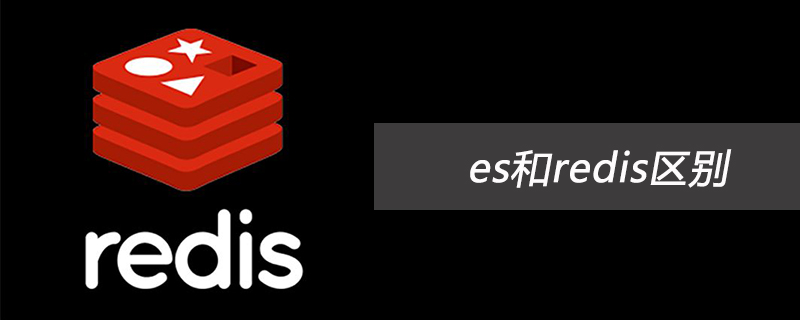Internal implementation of ordered collections
There are two internal implementations that can be used for ordered collections, namely compressed list (ziplist) and skip list (skiplist). Next, we will learn more about each in detail.
Use compressed list as internal implementation
When the number of elements in the ordered set is less than zset-max-ziplist-entries (default is 128), and each When the length of the element member is less than zset-max-ziplist-value (default is 64 bytes), a compressed list is used as the internal implementation of the ordered set.
Each set element consists of two compressed list nodes close together, where the first node saves the members of the element, and the second node saves the branch of the element. By arranging the elements in the compressed list together in order of score size, memory space usage can be effectively reduced.
For example, we use the zadd command to create an ordered set implemented with a compressed list:
127.0.0.1:6379> zadd one-more-zset 1 one 2 two 3 three (integer) 3 127.0.0.1:6379> zrange one-more-zset 0 -1 1) "one" 2) "two" 3) "three" 127.0.0.1:6379> object encoding one-more-zset "ziplist"
Using a jump table as the internal implementation
When the number of elements in the ordered set is greater than or equal to zset-max-ziplist-entries (default is 128), or the length of each element member is greater than or equal to zset-max-ziplist-value (default is 64 bytes), use skip list as the internal implementation of ordered set.
At this time, the ordered set actually contains two structures, one is a jump table and the other is a hash table.
In the jump list, all elements are arranged in order from small to large. The object pointer in the node of the jump table points to the string object of the element member, and score saves the score of the element. Through jump tables, Redis can quickly perform score range, ranking and other operations on ordered sets.
In a hash table, a mapping from element members to element scores is created for an ordered set. In a key-value pair, the key is a string object and points to the element member, while the value holds the element's score. Through hash tables, Redis can quickly find the score of a specified element.
Although ordered sets use both jump tables and hash tables, both data structures use pointers to share members and scores in elements, without additional memory waste.
For example, we use the zadd command to create an ordered set implemented with a skip table:
127.0.0.1:6379> zadd one-more-zset 1 long-long-long-long-long-long-long-long-long-long-long-long-long-long (integer) 1 127.0.0.1:6379> zrange one-more-zset 0 -1 1) "long-long-long-long-long-long-long-long-long-long-long-long-long-long" 127.0.0.1:6379> object encoding one-more-zset "skiplist"
Internally implemented conversion
When When an ordered set uses a compressed list as its internal implementation, and if a longer element member is added to the ordered set, or when there are too many elements in the ordered set, the ordered set will be converted to a jump. Table as internal implementation. Ordered sets using compressed lists as internal implementations do not convert to skip lists.
For example, we first create an ordered set with a compressed list as its internal implementation:
127.0.0.1:6379> zadd one-more-zset 1 one 2 two 3 three (integer) 3 127.0.0.1:6379> zrange one-more-zset 0 -1 1) "one" 2) "two" 3) "three" 127.0.0.1:6379> object encoding one-more-zset "ziplist"
Then, and then add an element with a longer member to it, it is converted to Jump list as internal implementation:
127.0.0.1:6379> zadd one-more-zset 4 long-long-long-long-long-long-long-long-long-long-long-long-long-long (integer) 1 127.0.0.1:6379> zrange one-more-zset 0 -1 1) "one" 2) "two" 3) "three" 4) "long-long-long-long-long-long-long-long-long-long-long-long-long-long" 127.0.0.1:6379> object encoding one-more-zset "skiplist"
Then, the element of the longer member is removed from the ordered set. The ordered set still uses jump list as internal implementation:
127.0.0.1:6379> zrem one-more-zset long-long-long-long-long-long-long-long-long-long-long-long-long-long (integer) 1 127.0.0.1:6379> zrange one-more-zset 0 -1 1) "one" 2) "two" 3) "three" 127.0.0.1:6379> object encoding one-more-zset "skiplist"
The above is the detailed content of How to implement the internal implementation of ordered collections in Redis. For more information, please follow other related articles on the PHP Chinese website!
 es和redis区别Jul 06, 2019 pm 01:45 PM
es和redis区别Jul 06, 2019 pm 01:45 PMRedis是现在最热门的key-value数据库,Redis的最大特点是key-value存储所带来的简单和高性能;相较于MongoDB和Redis,晚一年发布的ES可能知名度要低一些,ES的特点是搜索,ES是围绕搜索设计的。
 一起来聊聊Redis有什么优势和特点May 16, 2022 pm 06:04 PM
一起来聊聊Redis有什么优势和特点May 16, 2022 pm 06:04 PM本篇文章给大家带来了关于redis的相关知识,其中主要介绍了关于redis的一些优势和特点,Redis 是一个开源的使用ANSI C语言编写、遵守 BSD 协议、支持网络、可基于内存、分布式存储数据库,下面一起来看一下,希望对大家有帮助。
 实例详解Redis Cluster集群收缩主从节点Apr 21, 2022 pm 06:23 PM
实例详解Redis Cluster集群收缩主从节点Apr 21, 2022 pm 06:23 PM本篇文章给大家带来了关于redis的相关知识,其中主要介绍了Redis Cluster集群收缩主从节点的相关问题,包括了Cluster集群收缩概念、将6390主节点从集群中收缩、验证数据迁移过程是否导致数据异常等,希望对大家有帮助。
 Redis实现排行榜及相同积分按时间排序功能的实现Aug 22, 2022 pm 05:51 PM
Redis实现排行榜及相同积分按时间排序功能的实现Aug 22, 2022 pm 05:51 PM本篇文章给大家带来了关于redis的相关知识,其中主要介绍了Redis实现排行榜及相同积分按时间排序,本文通过实例代码给大家介绍的非常详细,对大家的学习或工作具有一定的参考借鉴价值,希望对大家有帮助。
 详细解析Redis中命令的原子性Jun 01, 2022 am 11:58 AM
详细解析Redis中命令的原子性Jun 01, 2022 am 11:58 AM本篇文章给大家带来了关于redis的相关知识,其中主要介绍了关于原子操作中命令原子性的相关问题,包括了处理并发的方案、编程模型、多IO线程以及单命令的相关内容,下面一起看一下,希望对大家有帮助。
 实例详解Redis实现排行榜及相同积分按时间排序功能的实现Aug 26, 2022 pm 02:09 PM
实例详解Redis实现排行榜及相同积分按时间排序功能的实现Aug 26, 2022 pm 02:09 PM本篇文章给大家带来了关于redis的相关知识,其中主要介绍了Redis实现排行榜及相同积分按时间排序,本文通过实例代码给大家介绍的非常详细,下面一起来看一下,希望对大家有帮助。
 一文搞懂redis的bitmapApr 27, 2022 pm 07:48 PM
一文搞懂redis的bitmapApr 27, 2022 pm 07:48 PM本篇文章给大家带来了关于redis的相关知识,其中主要介绍了bitmap问题,Redis 为我们提供了位图这一数据结构,位图数据结构其实并不是一个全新的玩意,我们可以简单的认为就是个数组,只是里面的内容只能为0或1而已,希望对大家有帮助。
 一起聊聊Redis实现秒杀的问题May 27, 2022 am 11:40 AM
一起聊聊Redis实现秒杀的问题May 27, 2022 am 11:40 AM本篇文章给大家带来了关于redis的相关知识,其中主要介绍了关于实现秒杀的相关内容,包括了秒杀逻辑、存在的链接超时、超卖和库存遗留的问题,下面一起来看一下,希望对大家有帮助。


Hot AI Tools

Undresser.AI Undress
AI-powered app for creating realistic nude photos

AI Clothes Remover
Online AI tool for removing clothes from photos.

Undress AI Tool
Undress images for free

Clothoff.io
AI clothes remover

AI Hentai Generator
Generate AI Hentai for free.

Hot Article

Hot Tools

mPDF
mPDF is a PHP library that can generate PDF files from UTF-8 encoded HTML. The original author, Ian Back, wrote mPDF to output PDF files "on the fly" from his website and handle different languages. It is slower than original scripts like HTML2FPDF and produces larger files when using Unicode fonts, but supports CSS styles etc. and has a lot of enhancements. Supports almost all languages, including RTL (Arabic and Hebrew) and CJK (Chinese, Japanese and Korean). Supports nested block-level elements (such as P, DIV),

MantisBT
Mantis is an easy-to-deploy web-based defect tracking tool designed to aid in product defect tracking. It requires PHP, MySQL and a web server. Check out our demo and hosting services.

SAP NetWeaver Server Adapter for Eclipse
Integrate Eclipse with SAP NetWeaver application server.

Atom editor mac version download
The most popular open source editor

MinGW - Minimalist GNU for Windows
This project is in the process of being migrated to osdn.net/projects/mingw, you can continue to follow us there. MinGW: A native Windows port of the GNU Compiler Collection (GCC), freely distributable import libraries and header files for building native Windows applications; includes extensions to the MSVC runtime to support C99 functionality. All MinGW software can run on 64-bit Windows platforms.







